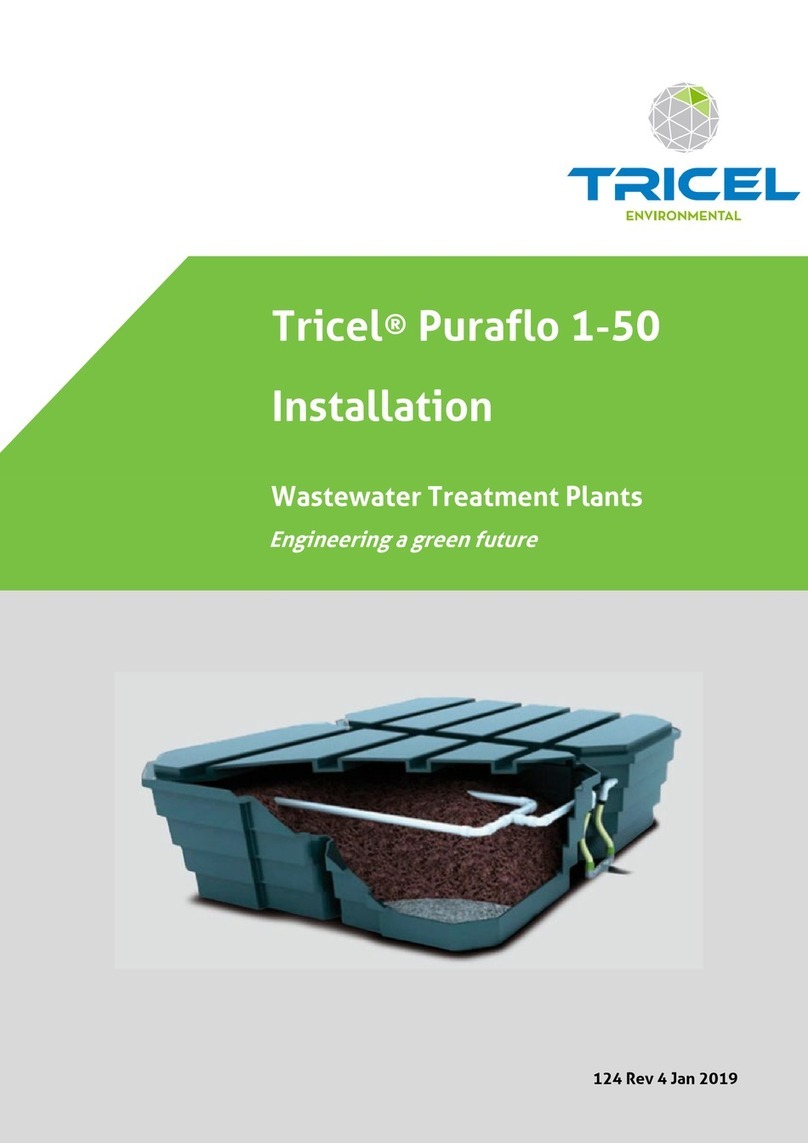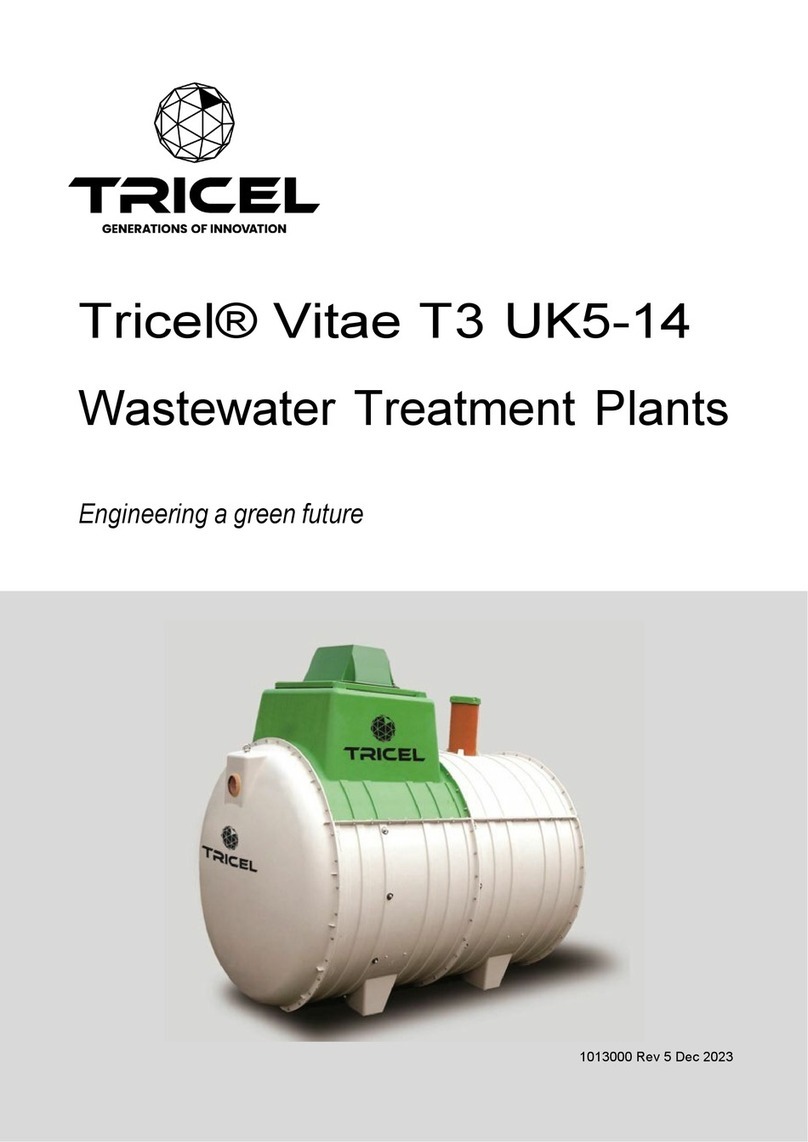1
Contents
1Health & safety precautions .................................................................................................................................5
1.1 General .............................................................................................................................................................5
1.2 Electrical / maintenance...............................................................................................................................5
1.3 Installation.......................................................................................................................................................5
2Introduction: Tricel Novo ..................................................................................................................................... 6
2.1 Treatment stages.......................................................................................................................................... 6
3Tricel Novo range ....................................................................................................................................................7
3.1 Dimensions......................................................................................................................................................7
3.2 Tank drawings ................................................................................................................................................8
3.3 Pumped outlet ............................................................................................................................................. 11
3.3.1 Standard pump specification:..............................................................................................................12
3.3.2 Outlet connection: ..................................................................................................................................12
4Transportation & lifting .......................................................................................................................................13
4.1 Lifting tanks of 1-4 modules (Max. 4.6m) .............................................................................................13
4.2 Lifting tanks of 5-6 modules (Max. 6.6m).............................................................................................14
5
Installation
..............................................................................................................................................................15
5.1 Installation planning...................................................................................................................................15
5.2 Inspection opon reception of tanks........................................................................................................15
5.3 Positioning and precautions.....................................................................................................................15
5.4 Types of installation....................................................................................................................................16
5.5 Installation procedure ................................................................................................................................17
5.5.1 Excavation (Dry & Wet sites)................................................................................................................17
5.5.2 Installation –step by step guide.........................................................................................................19
5.6 Gravel specification.................................................................................................................................... 20
5.7 Concrete specification................................................................................................................................21
5.8 Topsoil requirements..................................................................................................................................21
5.9 Risers.............................................................................................................................................................. 22
5.10 Non-standard installations ...................................................................................................................... 23
5.10.1
Alternative to concrete backfill (for wet sites without risers only)
................................ 23
5.10.2 Sloping ground .................................................................................................................................. 23
5.10.3 Proximity to rolling & static loads ................................................................................................ 23
5.11 Electrical requirements.............................................................................................................................. 24
5.11.1 Electrical Diagrams............................................................................................................................ 25






































